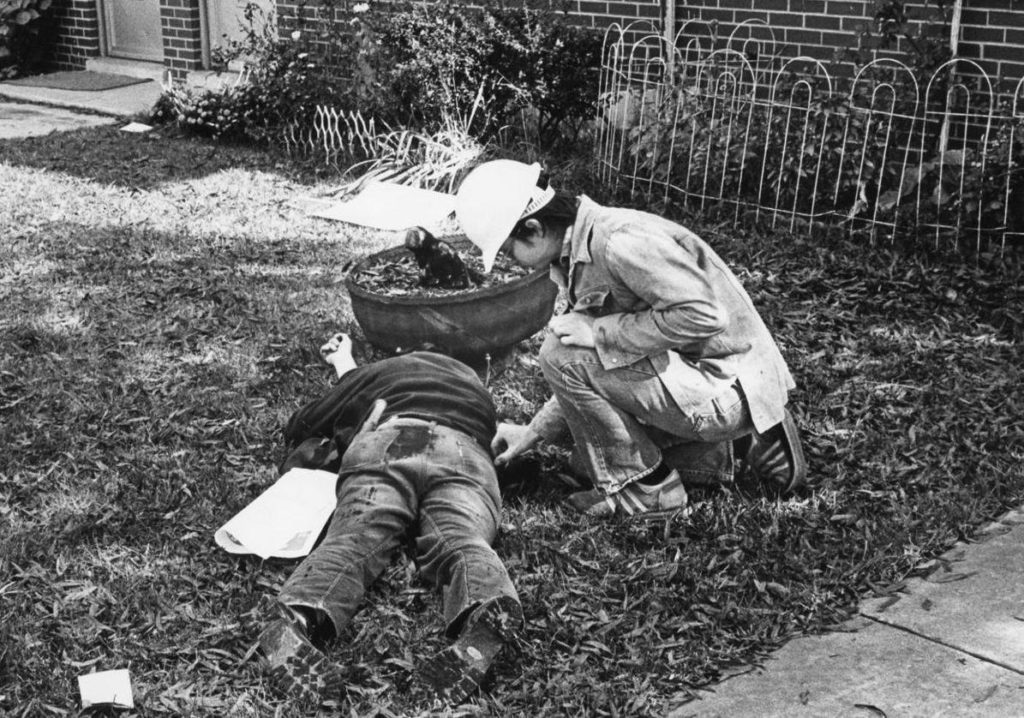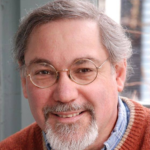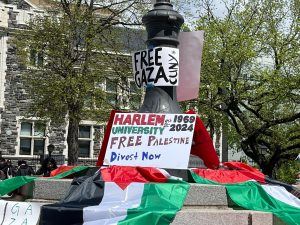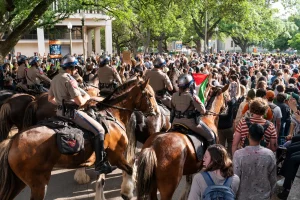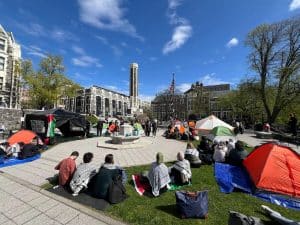In those parts of the United States where school curricula include the Civil Rights Movement of the 1950s and 1960s, kids learn about Greensboro, North Carolina — where four Black students from North Carolina Agricultural and Technical State University began a sit-in at the lunch counter of the local Woolworth’s to protest Black people being refused service. That protest, launched on February 1, 1960, drew larger numbers to the store, spread to other Southern cities, became a widespread boycott that hurt sales, and store owners eventually desegregated.
Those same schoolchildren, and most Americans, don’t learn about something else that happened in Greensboro. It was on November 3, 1979, when the city was the site of a political massacre — the sort typically confined to this country’s late 19th and early 20th century history, and most often involving trade unionists. And it was carried out by what can only be called an organized death squad, with the complicity of the local police.
The Killings
In the late 1970s, the Greensboro area — indeed most of North Carolina — was a hotbed of two diametrically opposed political activities. One involved a continuing effort to organize textile workers into unions. In Greensboro, poor Black people comprised the majority of workers in the local mills, and they were subjected to horrendous pay and working conditions. The other was the activity of the Ku Klux Klan, which was continuing to win new members and showed a particular interest in disrupting union organizing. In Greensboro, the Communist Workers Party (CWP), a Maoist organization with a few branches around the country, was at the center of the unionization efforts, especially through its Trade Union Educational League.
The CWP and Klan had been facing off elsewhere in the state. In April, they clashed in Winston-Salem. In July, when the KKK held a rally and viewing of the racist film “The Birth of a Nation” in the small town of China Grove between Greensboro and Charlotte, CWP members showed up and burned a Confederate flag. As CWP leader told reporters, “The KKK is one of the most treacherous scum elements produced by this dying system of capitalism.”
Later in the year, the CWP called a “Death to the Klan” rally for Saturday, November 3 in Greensboro. Because of the KKK’s campaign of intimidation against the union organizing, the rally was seen as part of that larger effort. The same CWP leader publicly challenged the Klan to show up.
As was discovered later, the Greensboro Police Department and FBI had an “informant” within the Klan, as well as within the American Nazi Party, which was working with the KKK in Greensboro and most certainly shared a lot of members. The informant notified his cop bosses that the Klan would be at the rally, armed and looking to do some shooting. CWP members came to the rally with handguns for protection.
What happened at the rally, scheduled to start at noon, was captured on video by local media. A few minutes before the start, a caravan of ten vehicles packed with about 40 Klansmen and Nazis showed up at the rally site, a housing project in a Black neighborhood. As they drove back and forth, rally goers hit some of the cars with their picket signs and threw rocks. KKKers and Nazis jumped out of their vehicles, and armed with shotguns, rifles, and pistols began to shoot. In almost no time, four people were dead. Another died at the hospital two days later. They were all members or sympathizers of the Communist Workers Party. Eleven people, including some members of the Klan, were wounded.
The handful of cops on the scene watched the shootings and then arrested the Klansmen and Nazis.
Three Trials
Two criminal trials of several member of the KKK and American Nazi Party took place, first in state court and later in federal court. In the 1980 state trial, five were charged with first-degree murder and felony riot. Despite the TV footage being shown in the courtroom, the local all-white jury acquitted the murderers. In the months before the trial — indeed, beginning the very next day in the headline of the Greensboro daily newspaper — the message was that this had been a “shootout,” not an attack by the Klan and Nazis. By the time the trial came around, the prejudiced jury found it easy to conclude that the men had acted in “self-defense” and that the shootings had nothing to do with race but were politically motivated by their opposition to white communists.
In 1984, a second civil rights trial with nine defendants took place in federal court. They, too, were acquitted, when the jury drew the same conclusions.
The next year, CWP survivors brought a $48 million civil suit against the KKK, Nazis, the city of Greensboro and its police department, the State of North Carolina, the FBI, and the U.S. Bureau of Alcohol, Tobacco, and Firearms (AFT). The suit alleged wrongful death and civil rights violations and spelled out the negligence of the cops, who had foreknowledge of the Klan-Nazi plans from the informant and failed to protect demonstrators. Even this victory was muted: the jury awarded only $400,000 of the $48 million requested, and found only eight of the 87 named individuals responsible — and that was for the death of the one protester who was not an official CWP member. The city settled with the plaintiffs for $351,000.
Four Decades of “Reconciliation”
Over the decades since the massacre and trials, there have been numerous efforts in Greensboro to confront the underlying racism and anti-unionism that drove the events of 1979. An official report soon after stated that the march had “clearly dispelled the notion that all was well in Greensboro’s human relations,” and in the early 1980s proposals from a Citizens Review Committee were implemented. One in particular called for greater police presence at “confrontational events” to ensure safety — but ask the people in nearby Graham how well that’s working in 2020; police there “ensured safety” on Halloween day by pepper spraying peaceful demonstrators and their small children who had a permit to march to the polls.
In the 2000s, a Greensboro Truth and Reconciliation Commission came together to investigate what had happened. The mayor and most of the City Council would have none of it; the latter voted against endorsing the undertaking and, without any official authority, the effort lacked the ability to compel testimony or hold people to telling the truth. The commission found, nevertheless, that for all the “inflammatory rhetoric” on both sides the Klan and Nazis had come to the rally with the intent to inflict injury on the protesters, and that the police had colluded with the Klan to allow that violence to happen.
In 2009, the Greensboro City Council passed a resolution expressing regret for the deaths, and in 2015 300 people attended a ceremony at which the city unveiled a marker to memorialize the Greensboro Massacre. Just last month, the City Council formally apologized for the massacre.
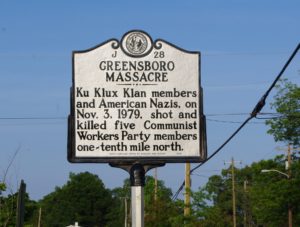
The Massacre’s Legacy
What is the legacy of the Greensboro Massacre? It certainly isn’t an end to racist and anti-union violence. And in Greensboro itself, you can still find people who say it was a “shootout” and the “commies got what was coming to them.” But the more serious legacy can be seen in the events of this past spring and summer in the United States, when protesters took to the streets across the country with the resurgence of the Black Lives Matter movement after the killing of George Floyd by cops in Minneapolis.
The most serious legacy is in the form of a lesson, one that has persisted since the Greensboro Massacre and well before: when they’re not doing the beating and killing themselves, the cops can be counted on to collude with the racist, right-wing terrorists who are. There’s a long list of examples just this year.
Who are the heirs of the Greensboro collusion? Who are the heirs of the protection the cops gave by letting the Klansmen kill before stepping in? Today, it’s still the Klan and Nazis, but it’s also the Proud Boys, militias, and all sorts of scum with whom the cops collude. And it’s people like Kyle Rittenhouse, who on the night of August 25 in Kenosha, Wisconsin, showed up with a rifle and killed two anti-racist demonstrators and seriously wounded another. What happened next? The cops let him walk right past them and go home to Illinois.
Forty-one years after the Greensboro Massacre, nothing has changed. Smash the Klan and the Nazis! Abolish the police!


